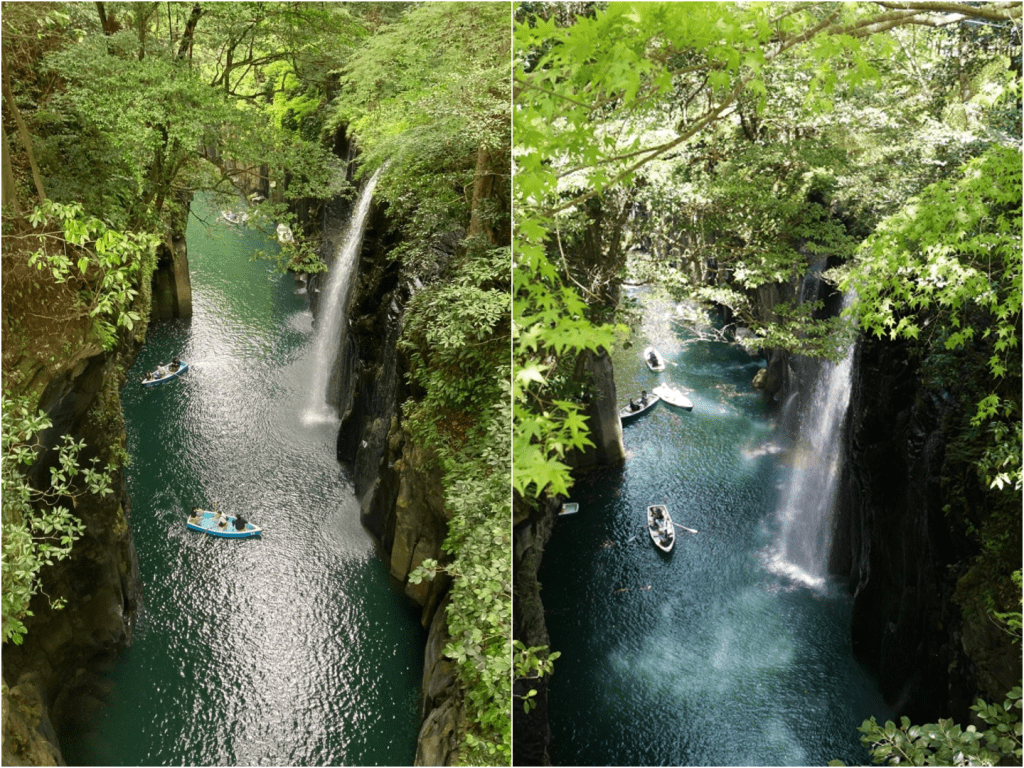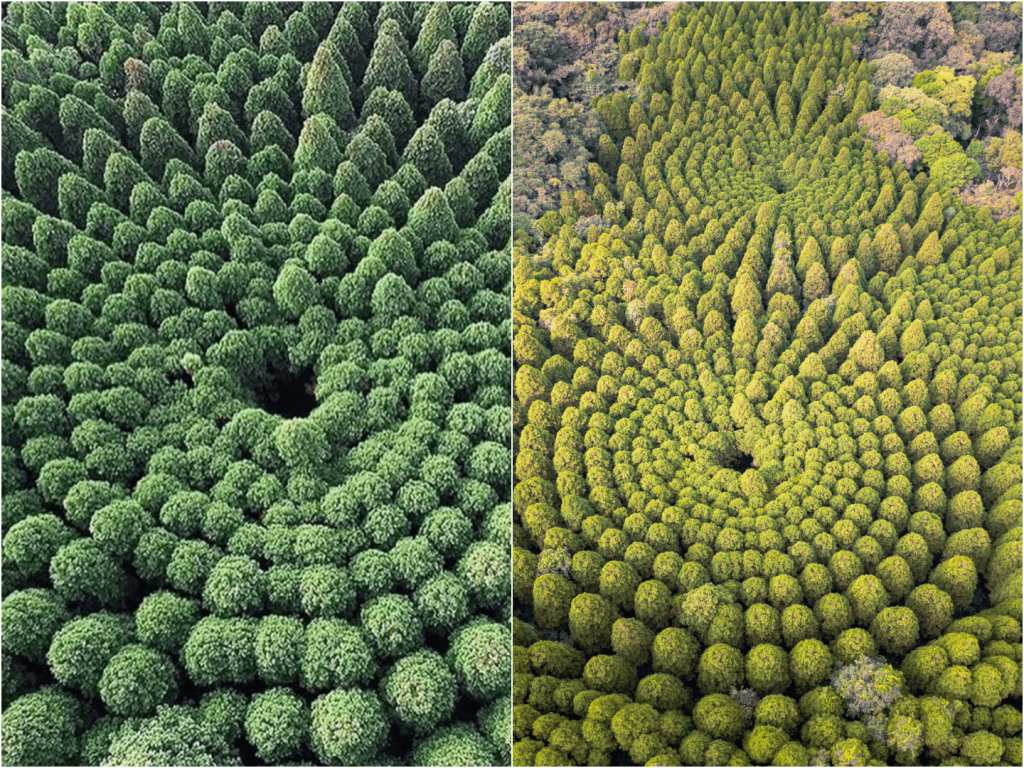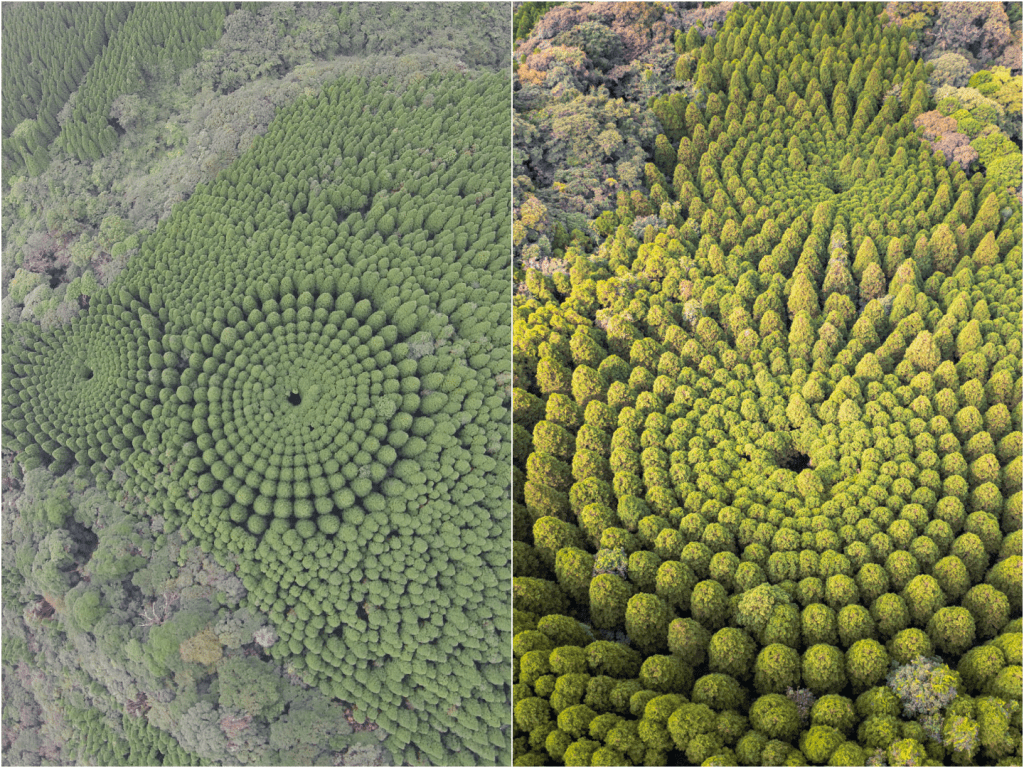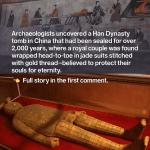The Forest That Grows in Circles — An Experiment Turned Natural Wonder
I never expected a forest to grow in perfect rings, like crop circles planted by nature. But that’s exactly what happens in a patch of southern Japan, near the town of Miyazaki. From above, the arranged cedar trees form several concentric circles, eerily precise and oddly beautiful. What looks like a secret code from the sky is actually the result of a human experiment begun in the 1970s—or maybe it was nature testing itself. It’s one of those hidden corners of the world that feels part science and part fortune, both playful and profound.
Picture a hillside planted with Japanese cedar, or sugi, in rings spread outward from a center point. The inner circle is tight and lush, the next a bit sparser, and so on, creating bands of green rippling outward. Someone first noticed it decades ago, and only recently did photos emerge online, prompting me to dig in. It turns out back in 1973, foresters wanted to study how tree spacing affects growth. They planted 720 trees across ten concentric circles. They varied density, spacing, even species patterns, watching over the years how each ring grew in its own way ([turn0search1]).
Today, after nearly fifty years, those rings remain visible from drone or satellite images. The inner circle boasts tall, healthy cedars reaching high above. As rings expand outward, trees get thinner, moodier, sometimes with clearings where some seedlings died. The result is almost artistic—nature painting with human intention. I imagine floating above and seeing those circles glowing green, framed by forest and sky. It’s simple yet deeply surprising.

That experiment wasn’t meant for show. It was a quiet forestry study meant to help understand tree competition for light, nutrients, and water. Scientists wanted to know how spacing impacted growth rates over decades. The concentric design made it easy to observe differences across gradients, a living laboratory of wood and wind. No mystery, just careful planning—and then patience.
Still, the result feels magical. The trees didn’t grow in perfectly symmetrical rings overnight. Each ring sent up shoots, competed underground, whispered to its neighbors through roots and fungi. Over five decades, they interacted, died, thrived, shaped by rain, sun, soil, and the rhythm of seasons. What started as a controlled scenario blossomed into a living artwork. It reminds me how even controlled science can fall into grace.
I reached out to forestry notes and local guides. They say the site isn’t marked on maps. Locals drive by, perhaps unaware of the study’s purpose, but enjoy the view. One local photographer said the forest “feels like stepping into another world” when seen from a hilltop at sunset. The concentric ridges catch light at different angles, casting layered shadows like green waves frozen on land.
This place sits far from tourist crowds—no visitor centers, no admission fees, no guided tours. Just quiet trees and curious skies. People share coordinates online (around 31° 43′ 50″ N, 131° 23′ 05″ E) and drone fans share footage. It’s a low-key wonder, an unintentional art piece that grows every year.

What struck me most is how human intention and natural harmony can coexist. Here, a simple question—how does spacing affect tree health?—met with decades of sunlight, storms, insects, fungi. Humans planted; nature shaped. Over time, boundaries softened. Rings blurred with ambient forest. Some rings grew thick, others thinned, some trees fell, others flourished. It’s like planting seeds of curiosity and watching wisdom bloom.
And there’s something hopeful in that. In a world full of loud signals and overnight fame, this circular grove grew slowly and quietly. It didn’t ask for attention, but it earned it by staying true. It teaches patience as a virtue, care as a practice, and curiosity as a gift. We planted something; nature responded, and fifty years later, we look up and say, “Wow.”
I haven’t visited yet, but I picture standing among those cedars in springlight, sensing layers of history in rings around me. I picture how, in sixty years, the rings might merge, transform, or fade, telling a different story. The experiment will end someday, but the memory, the pattern, might stay—etched in aerial drifts and human hearts.
So if you ever wander in southern Japan and stumble upon a quiet ringed forest, take a moment. Wonder who first marked that center. Wonder how light travels through needles at dusk, how roots connect across rings. Feel reminded that even a simple question, asked patiently, becomes a living story. Concentric circles, quiet growth—turning science into something strangely beautiful.

Lena Carter is a travel writer and photographer passionate about uncovering the beauty and diversity of the world’s most stunning destinations. With a background in cultural journalism and over five years of experience in travel blogging, she focuses on turning real-world visuals into inspiring stories. Lena believes that every city, village, and natural wonder has a unique story to tell — and she’s here to share it one photo and article at a time.





